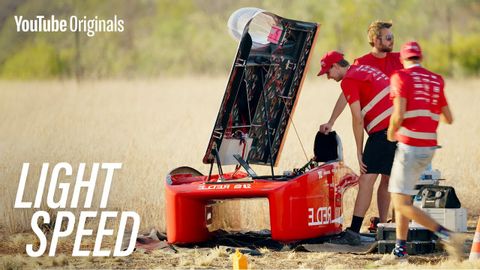太陽能賽車背後的戰術和技術 (The Tactics and Technology Behind Solar Car Racing)
 沒有此條件下的單字
沒有此條件下的單字US /ˈstrætədʒi/
・
UK /'strætədʒɪ/
US /ædˈvæntɪdʒ/
・
UK /əd'vɑ:ntɪdʒ/
- n. (c./u.)優勢;優點;利益
- v.t.利用;佔便宜
US /ɪkˈspɛkt/
・
UK /ɪk'spekt/
US /pəˈzɪʃən/
・
UK /pəˈzɪʃn/
- n. (c./u.)態度,觀點;位置;(團隊運動中個人所處的)位置;職位;處境;優勢
- v.t.定位;放置
